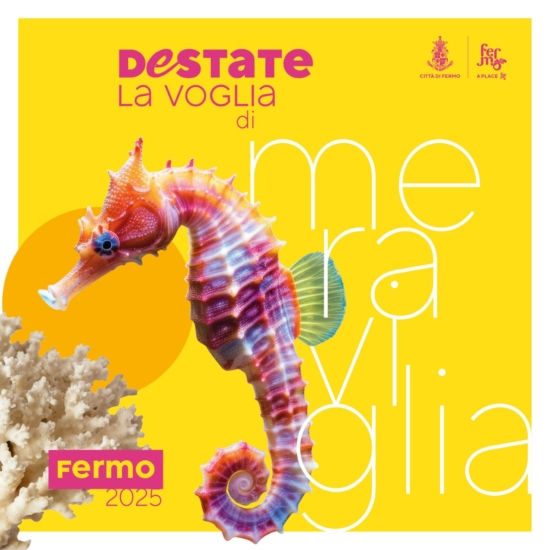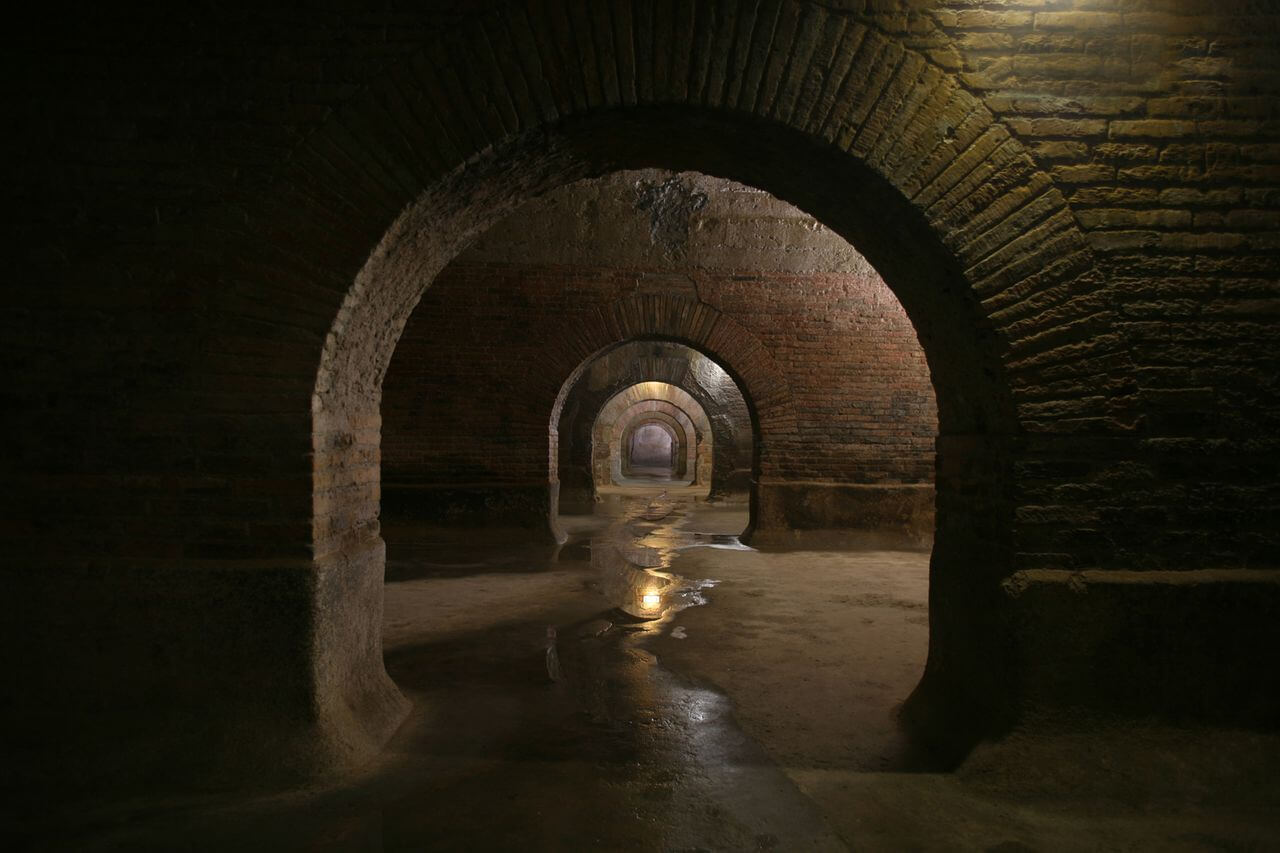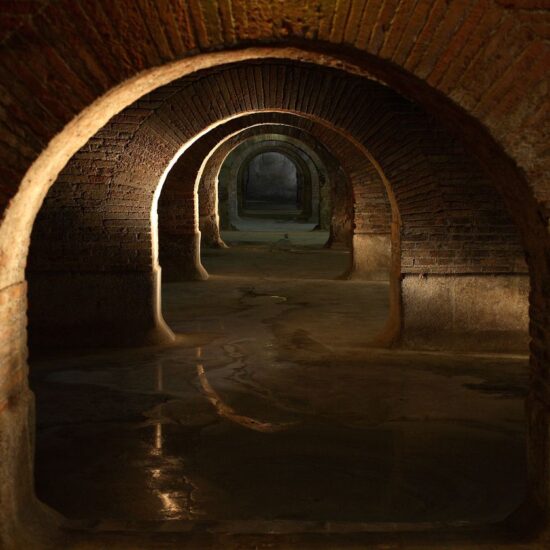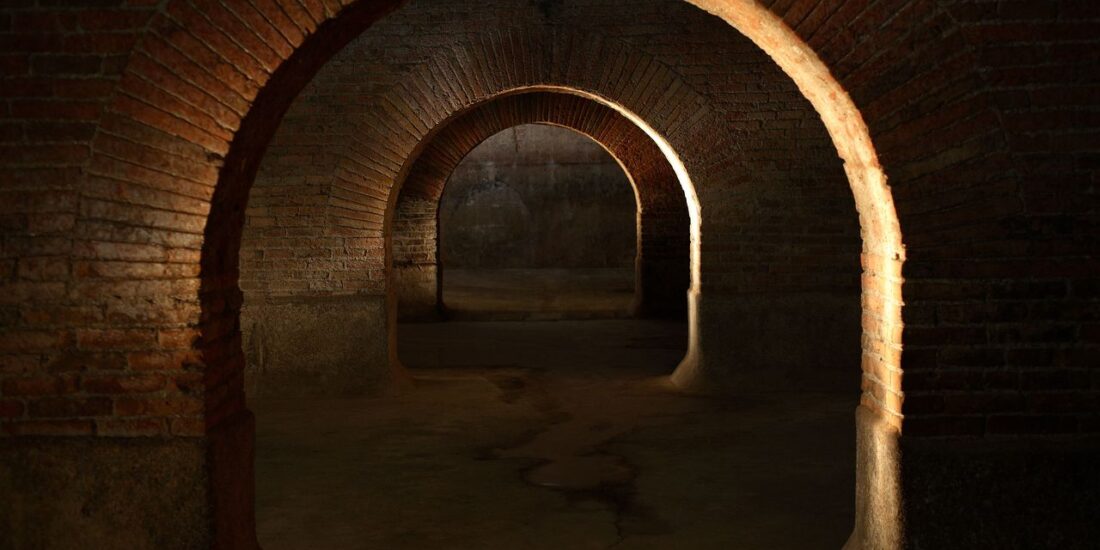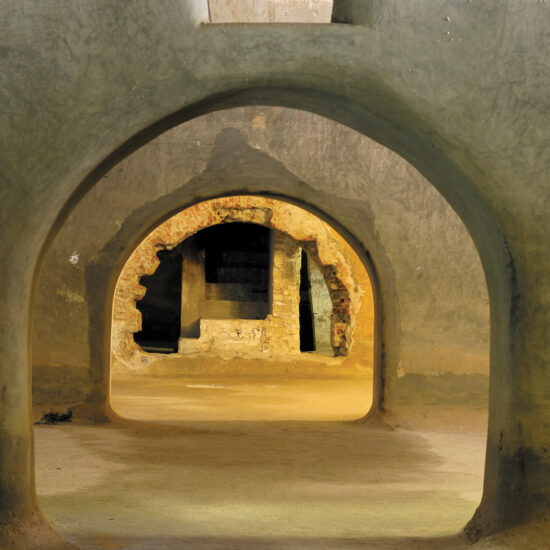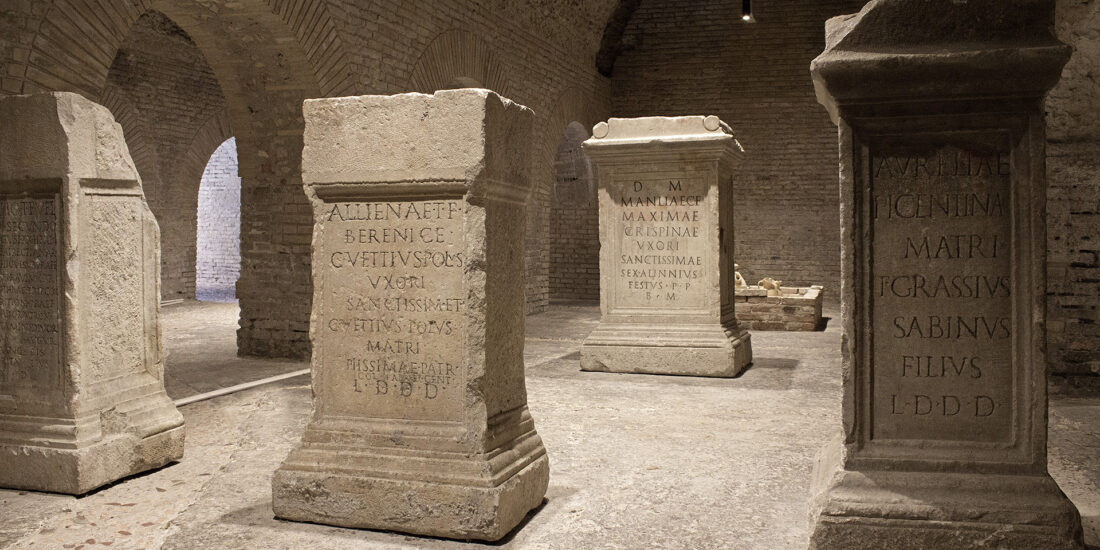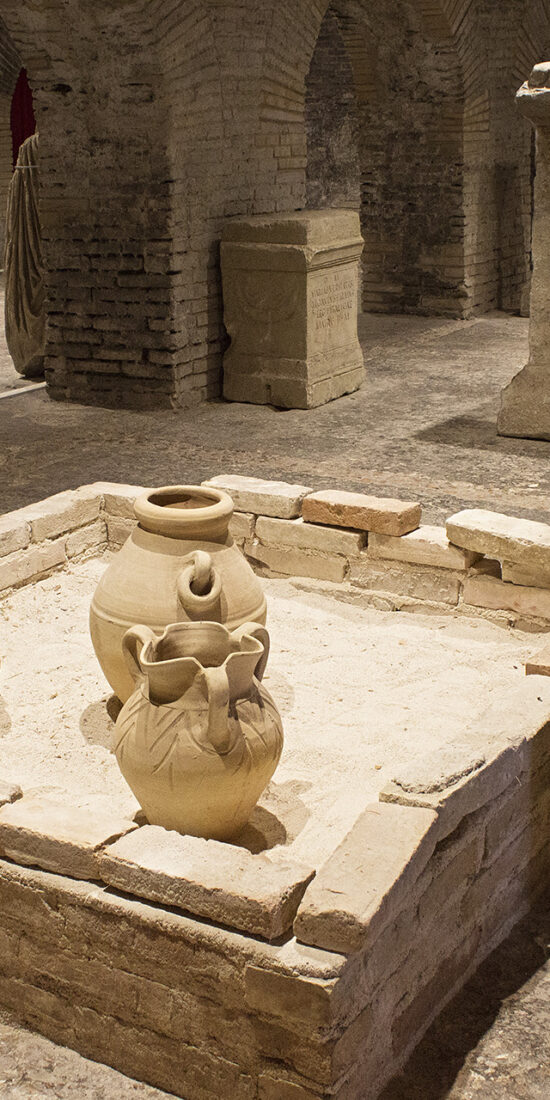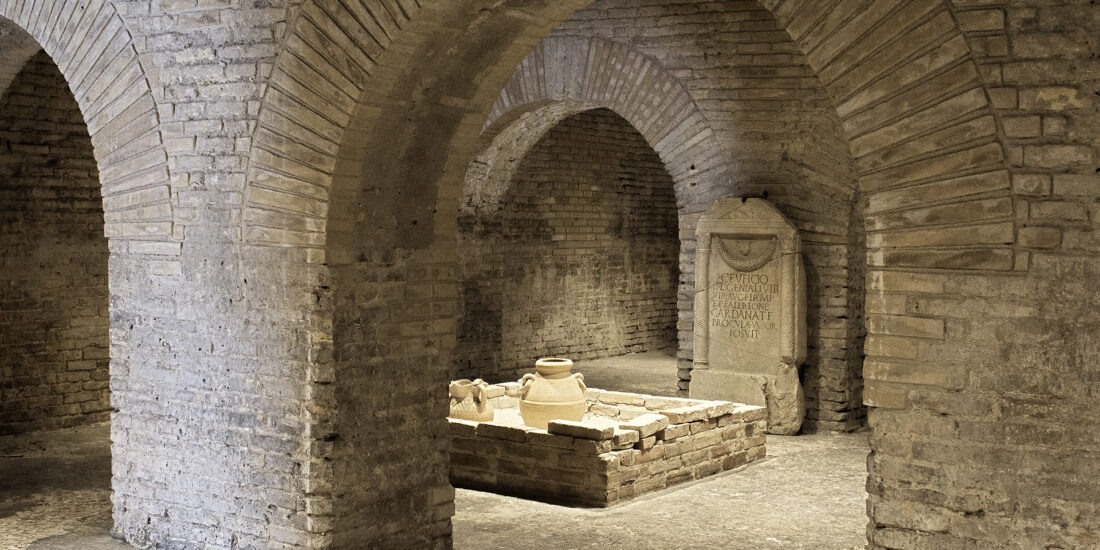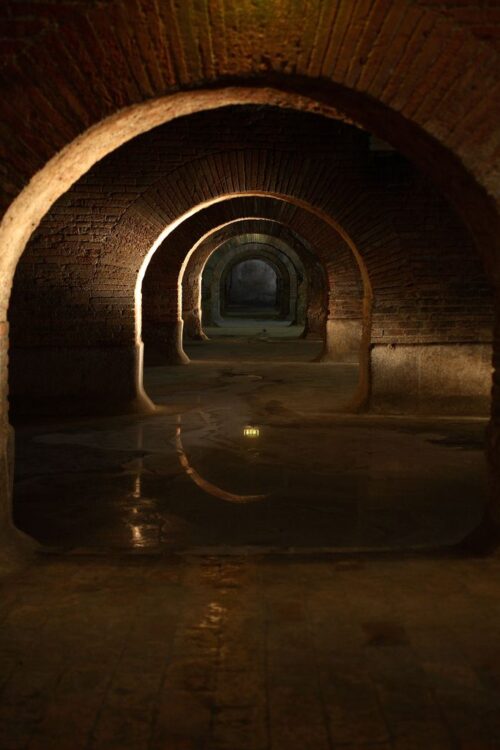Among the oldest and largest in the world, the Roman Csterns of Fermo were built between the first century. B.C. and the first century. A.D. The 30 rooms that compose them, of equal size with barrel vaulting, extend over an area of 2,200 square meters. Ancient cisterns for the collection of water at the service of the city, were abandoned and forgotten until their partial reuse from the end of the 19th century, and for about a century, as a city aqueduct.
The history of the Roman Cisterns
In a wonderful neighbourhood of Fermo, via degli Aceti twists and turns with its typical brick clay pavers and many solemn palaces.
Walking along this street, you come across the old late-medieval entrance (now on Via Paccarone, 36) to the large Roman cisterns.
Almost certainly it was decided to realize the so-called purgatory or limestone pools to meet an otherwise non-fulfilling water requirement. This wide underground complex is datable to the end of the 1st century B.C. and it’s the largest in Italy (2200 mq).
The underground system for receiving and inundating rainwater, similar to the water system of Chieti, allowed it to be redistributed efficiently to different areas of the city. For storage and subsequent supply, three tanks were built on the Girfalco, in the current Temistocle Calzecchi Onesti square and in Via degli Aceti, which obviously were at different heights.
The tanks of Roman cisterns
The first one currently can’t be visited because it is completely underground. However the excavations of 1927 delineated four non-communicating brick areas, barrel-vaulted and very similar to the large cisterns.
The second one is known with the name of Small Cisterns as its flow is smaller than the one of the tank located in Via degli Aceti, which however from a strictly structural point of view does not present significant differences with respect to the smaller one.
The large cisterns extend along a rather ample area that encloses via Paccarone, via di Vicolo Chiuso, via degli Aceti, largo Maranesi and has a maximum capacity of about 15,000 cubic meters. The interior consists of thirty rooms divided into three rows, each of which has a wall covered with opus signinum or cocciopesto which, as Vitruvio writes, was used mainly in the manufacture of tanks, aqueducts, thermal pools because they are suitable for waterproofing the mortar of lime.
The visit to the Fermo Roman cisterns is incredibly exciting, as they are in a perfect state of conservation and are able to vividly show the magnificence of a project so efficient that some rooms were used until the eighties of the twentieth century.
It is very suggestive to meet obsolete writings such as “Calma, Uscita- Stay calm, Exit”, dating back to the Second World War, when the rooms were used as a shelter against bombings.



